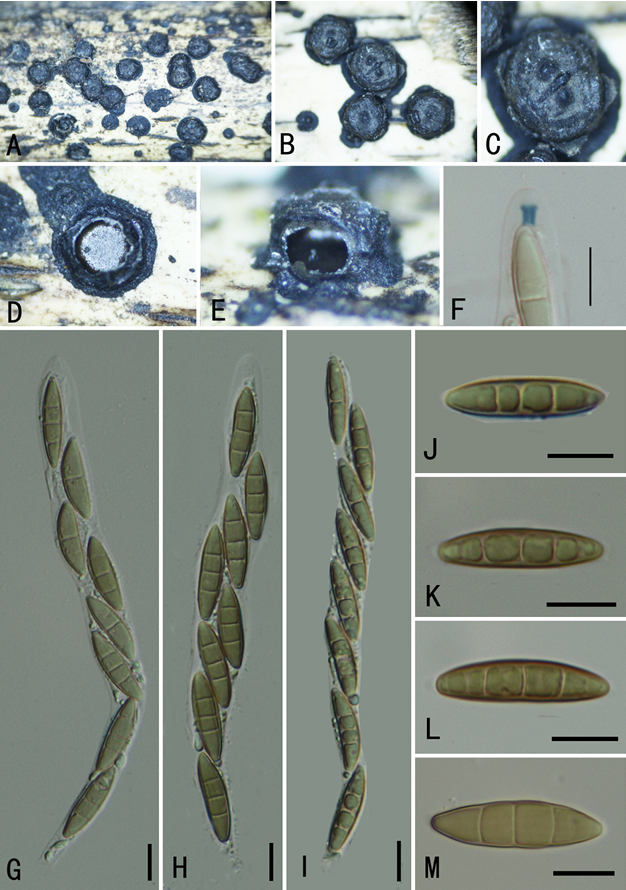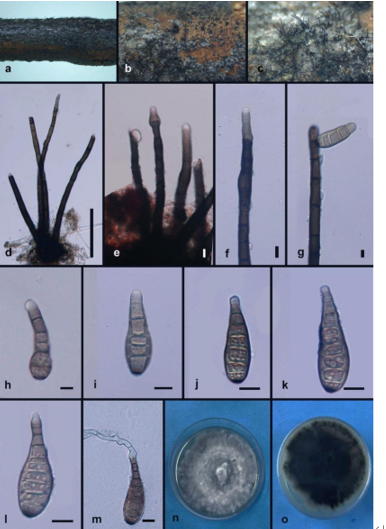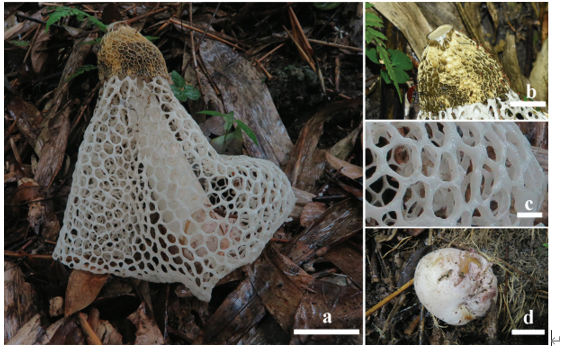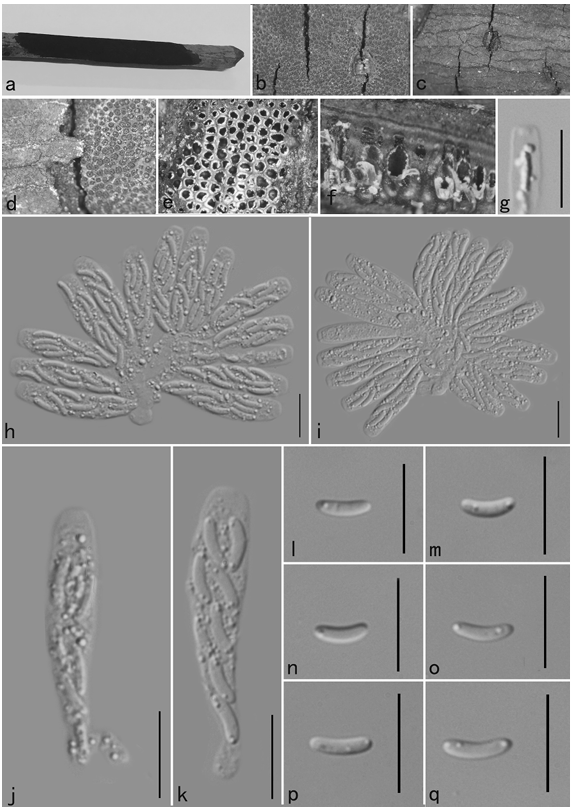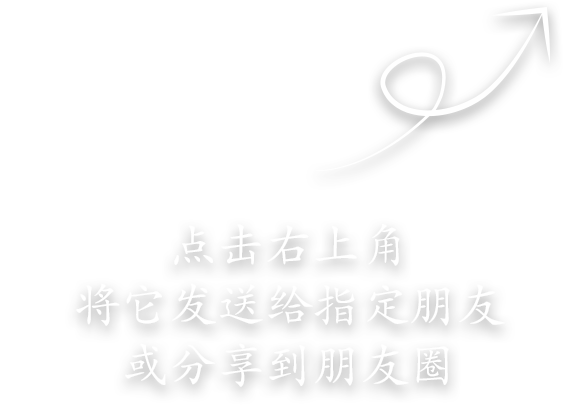Diaporthe coryli C.M. Tian & Q. Yang, sp. nov. 2020
MycoBank No: 829520
Holotype: CHINA. Shaanxi Province: Ningshan County, Huoditang Forest Farm, 33°28'26"N, 108°29'40"E, on branches of Corylus mandshurica, 10 July 2018, N. Jiang (holotype BJFC-S1671; ex-type living culture: CFCC 53083); 33°28'26"N, 108°29'38"E, on branches of Corylus mandshurica, 10 July 2018, N. Jiang (paratype BJFC-S1672; living culture: CFCC 53084).
Morphological description
Conidiomata pycnidial, conical to spherical, immersed in the host bark, erumpent from surface of host branches, scattered, 950–1200 × 420–650 μm diam., covered by orange discharged conidial masses at maturity, usually conspicuous. Ectostromatic disc inconspicuous. Central column beneath the disc more or less conical, bright yellow. Conidiophores reduced to conidiogenous cells. Conidiogenous cells cylindrical, hyaline, smooth, unbranched, tapering towards the apex, (8.5–)10–12(–13) × (2–)2.5–3 μm. Alpha conidia hyaline, aseptate, fusiform, multiguttulate, rarely 2-guttulate, (10.5–)11.5–13(–13.5) × 3–3.5 μm. Beta conidia not observed.Culture characters. Cultures incubated on PDA at 25 °C in the dark. Colony flat, felty with thick texture at the marginal area, with thin texture in the centre, producing beige pigment after 7–10 d. Aerial mycelium white, dense, conidiomata distributed in the centre, with translucent conidial drops exuding from the ostioles.
Habitat: on branches of Corylus mandshurica
Distribution: China
GenBank Accession: ITS MK432661,MK432662; cal MK432662,MK442982; his3 MK443006,MK443007; tef1 MK578135,MK578136;tub2 MK578061,MK578062
Notes: We generated sequences for two isolates of D. coryli, CFCC 53083 and CFCC 53084. This new species is phylogenetically most closely related to D. ukurunduensis and D. citrichinensis (Fig. 1). Diaporthe coryli can be distinguished from D. ukurunduensis, based on ITS, his3 and tef1 loci (8/467 in ITS, 1/460 in his3 and 1/336 in tef1); and from D. citrichinensis based on tef1 and tub2 loci (4/335 in tef1 and 25/428 in tub2). Morphologically, D. coryli can be distinguished from both D. ukurunduensis (11.5–13 × 3–3.5 vs. 5–6 × 2–3 μm) and D. citrichinensis (11.5–13 × 3–3.5 vs. 5.5–9 × 1.5–2.5 μm) in having larger alpha conidia (Huang et al. 2013, Gao et al. 2016).
Reference: Yang Q, Jiang N, Tian C-M (2020) Three new Diaporthe species from Shaanxi Province, China.
Diaporthe coryli on Corylus mandshurica (BJFC-S1671). A, B Habit of conidiomata in wood C transverse section of conidiomata D longitudinal section through conidiomata e conidiogenous cells attached with alpha conidia F alpha conidia. Scale bars: 500 μm (B–D); 10 μm (e); 20 μm (F).


